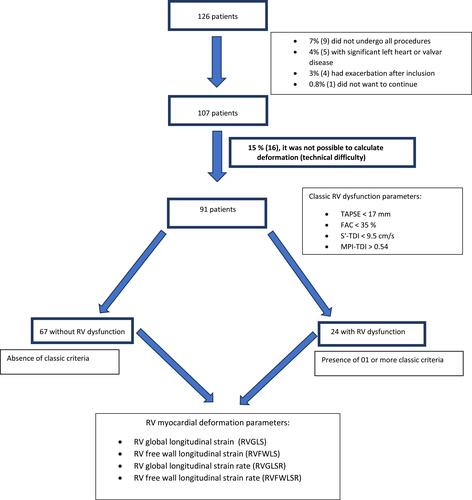Figures & data
Figure 1 Study design.

Table 1 Characterization of the Profile of Patients with and without RV Dysfunction
Table 2 Characterization of the RV and Spirometric Data of Patients with and without RV Dysfunction (Mean ± SD)
Table 3 Comparison of Myocardial Deformation Values Between Groups with and without RV Dysfunction
Table 4 Result of Binary Logistic Regression Analysis
Table 5 Correlation Between Myocardial Deformation Parameters of the RV and Classic Echocardiographic Parameters

